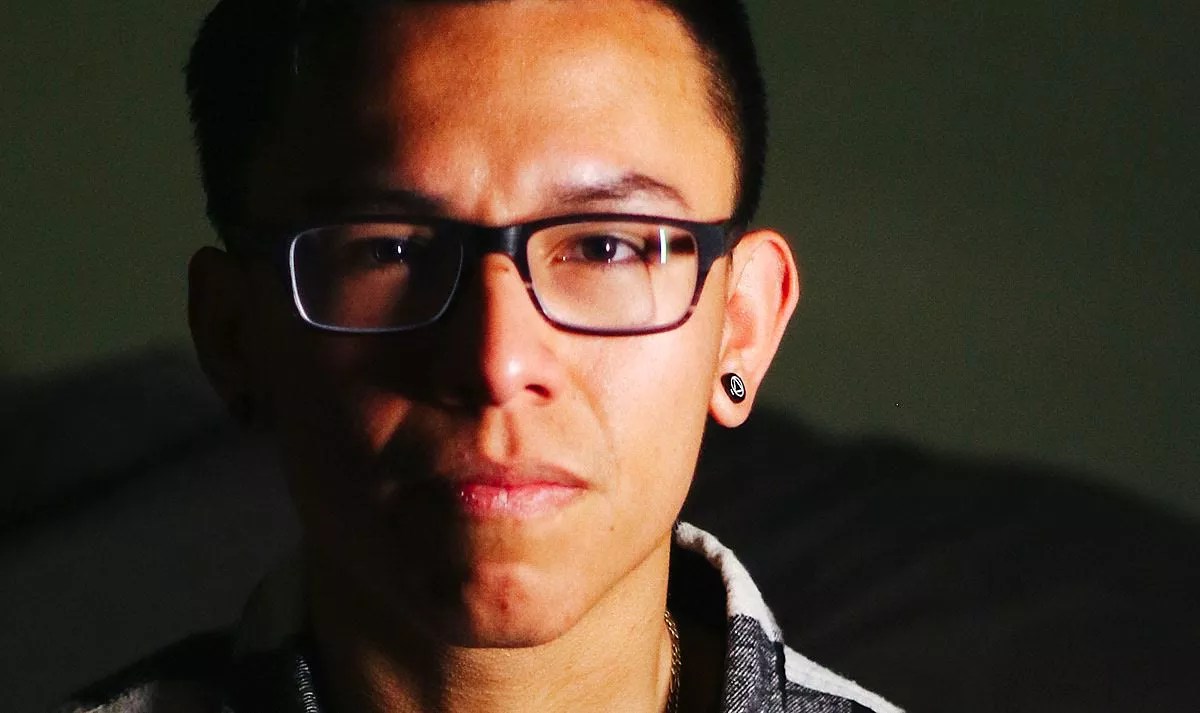
Evie Carpenter

Audio By Carbonatix

Angel Zavala told his mother he was gay a few years ago; it was more difficult to tell her he had tested positive for the HIV virus.
Evie Carpenter
Angel Zavala is HIV positive. And he wants you to know.
We don’t have to use your real name, I tell him. Or your photo. But Zavala wants both in the paper. He wants people to see that it can happen, even in 2017.
We are perched on a couch at Lux, the busiest coffee shop in Phoenix. I balance my notebook on my knee and Zavala sips his iced tea as hipsters purchase pastries and settle down at laptops. Zavala fits right in; he’s slender and cool, with small tattoos, black lace-up boots, and a striped tank top.
Zavala is 20. One day not long ago, he woke up and “something was wrong — I didn’t feel the same,” he says.
“I had a feeling that I had something.”
Zavala had the morning off from work, so he went to a clinic and took a test. An employee of the clinic took him aside. The initial “rapid test” was positive. (So was a later follow-up.)
“I had no words, when she told me,” he says. “You just start crying. You feel betrayed, isolated, alone.”
He kept asking, “Why?”
“I kind of contemplated my life. What is it I did that was so wrong?”
Zavala had never met anyone he knew was HIV positive. “There’s people who have it and don’t say anything,” he says. Or people who have never been tested. Sometimes Zavala used condoms. Other times, it was a trust issue. Someone said he was clean, you trusted him.
“I think if I’d known how common it was, I would have taken precautions,” he says. “It’s not open enough, it’s not talked about.”
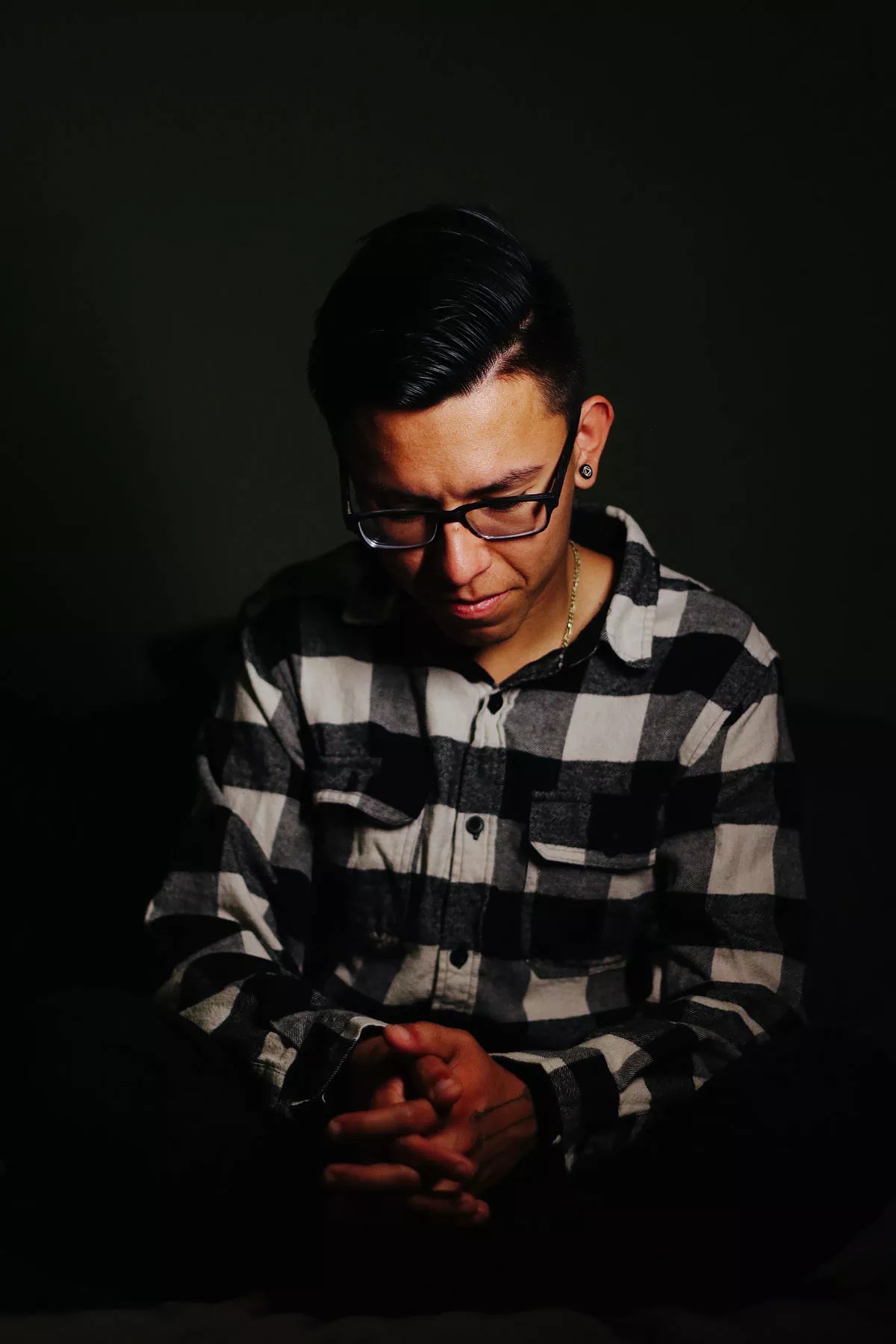
Angel Zavala didn’t know there was a drug, PrEP, that could prevent the transmission of the HIV virus.
Evie Carpenter
He didn’t learn about it in school; Arizona law prohibits discussion of safe practices for homosexuals. Until he found out he was HIV positive, Zavala never had heard there’s a prescription drug on the market that’s almost 100 percent effective against HIV transmission, even if you don’t use a condom.
After he got the news, Zavala didn’t text anyone, stopped posting on Facebook. For a couple of weeks, he recalls, “I just kind of drew into a shell.”
He knew he had people to tell. He doesn’t have time for a relationship, he says. “I just hooked up with partners here and there.” It was one of three people, he figured. He told them all; no one admitted to having known he was positive.
He also had to tell his mom. She already knew he was gay. He’d come out to her several years earlier in a letter when he was 14 or 15.
“She wrote me a letter back,” Zavala says.
She told him she’d known all along. “I think she probably knew before I did,” he says, smiling.
This news was different. “She thought it was a death sentence,” Zavala says.
So did he.
“I didn’t know there was help.”
I didn’t know there was help, either. I’ve covered social-welfare issues in the Valley for more than 25 years, but it’s been at least 15 since the last time I tried to report in any depth on HIV/AIDS in Phoenix. At the time, the infighting over funding and turf was too tangled and ugly to unravel. Nonprofits were opening, merging, imploding. The finger-pointing was impossible. I never wrote a story.
Then, a few months ago, a friend who works directly with patients mentioned that HIV infection rates have been increasing here but declining dramatically in other places, like San Francisco and Denver.
I did some homework, and she’s right. The rate of new HIV infections is much higher in southern states like Alabama and Mississippi — that’s been the case for some time — but according to the Arizona Department of Health Services, “between 2010 and 2015, Arizona’s population increased by 6 percent. During this same time period, new HIV cases increased by 34 percent.”
That’s based on data from the Centers for Disease Control. The CDC’s numbers are a little dated — they released the figures for 2015 just a few weeks ago. (They are always about a year behind, numbers-wise.)
But anecdotal reporting bears out the continuing trend. Dr. Anna Khalsa, a Phoenix physician who treats people with HIV/AIDS, says she currently is seeing 15 to 20 new HIV infections a month.
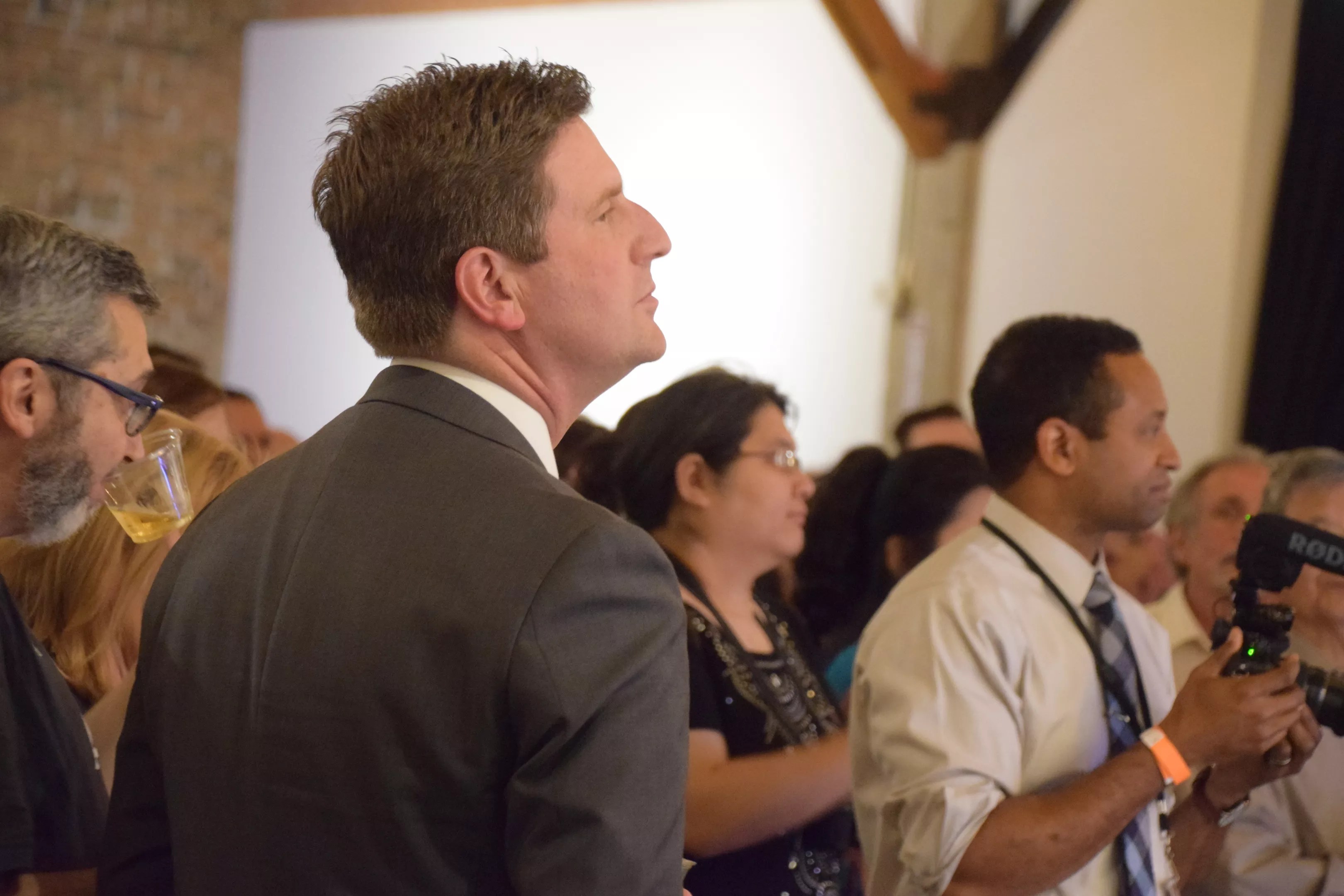
Mayor Greg Stanton and his wife, Nicole, have been staunch advocates for increasing AIDS awareness.
Lynn Trimble
The rates are much higher among African-Americans (echoing a national trend) and somewhat higher for Hispanics. Most cases still involve gay men. And although opioid addiction is a serious problem here, Khalsa says she’s not seeing new cases result from dirty needles; more likely, she says, someone got drunk or high and didn’t bother to use a condom.
Here’s the curious part. In many ways, support and services for people with HIV/AIDS in metro Phoenix has never been better. Since I last checked in, things got worse (for a while, there wasn’t even an AIDS walk here) and then improved dramatically.
The Parsons Center for Health and Wellness opened in 2013 — it’s a gorgeous, one-stop-shop facility built with a combination of public and private dollars, offering everything from traditional medical services to alternative therapies to counseling, help with insurance, and fundraising efforts, all geared to HIV/AIDS.
Phoenix Mayor Greg Stanton and his wife, Nicole, have done everything from festoon City Hall with a giant red AIDS awareness ribbon to push for a new program designed to all but eliminate new HIV infections in the next few years. The state also has a strong anti-HIV/AIDS program, with a slick ad campaign and a goal of eliminating new infections statewide by 2021.
And yet at the rate things are going, it’s unlikely that a person like Angel Zavala is ever going to encounter these efforts.
The state’s ad campaign is buried on a website (hivaz.org/victory) and what little HIV awareness propaganda there is on billboards and public transportation around town is fuzzy, both literally and figuratively. “It’s Only Dangerous If You Don’t Know It’s There” — Arizona’s first state-wide HIV/AIDS awareness campaign — is (ironically) hard to decipher unless you know the topic before you see the ad.
That’s clearly by design. This is a conservative place, and there’s only so much one liberal mayor and some well-meaning bureaucrats can accomplish. A lot of responsibility rests with state leaders and the people who elect them.
To a person, everyone interviewed for this story pointed to two things that are keeping HIV infection rates up here: First, a sex education law passed by the Arizona legislature in 1991 that prohibits discussion of safe sex surrounding homosexual behavior. And second, lack of accessibility to PrEP (that stands for pre-exposure prophylaxis), the drug that, according to recent studies, can just about eliminate HIV transmission if taken regularly.
Other issues include testing in places like emergency rooms, and lag times between diagnosis and treatment.
An HIV diagnosis is no longer a death sentence — the drugs that treat it have improved by leaps and bounds. But that presents perhaps the biggest challenge of all, in any place trying to lower infection rates. The treatment is so effective that HIV is now a chronic condition. Still, it’s not one you want to have, the experts say. Untreated, it’s incredibly dangerous. With treatment, the medications are expensive and can still be risky, particularly long-term.
The best thing is to not contract HIV at all.
Half of Anna Khalsa’s new patients are under 25. The experts used to look at 19 to 24 as the fastest growing group of new infections. Now, it’s 13 to 24.
The frustrating part, Khalsa says, is that she and others know what it will take.
“Even though we know how to prevent new HIV transmissions,” she says, “we haven’t had a reversal of the epidemic yet.”
Not here, anyway.
It’s always been complicated here.
I meet up with Stéphane Janssen at one of his favorite restaurants, Café Bink, near his winter home in Carefree. As I sit down, he warns me that he’s only eating pâté for lunch, because he also intends to order French fries. And dessert.
At 81, Janssen is in pretty good shape. A few aches, some minor surgery, but the Belgian art collector is still spry enough to participate in installations by the artist Spencer Tunick, who gathers and photographs large groups of naked people in locations around the world, with stunning results. The Dead Sea was a real pain to get in and out of, Janssen remarks as we sample the truffle fries and catch up.
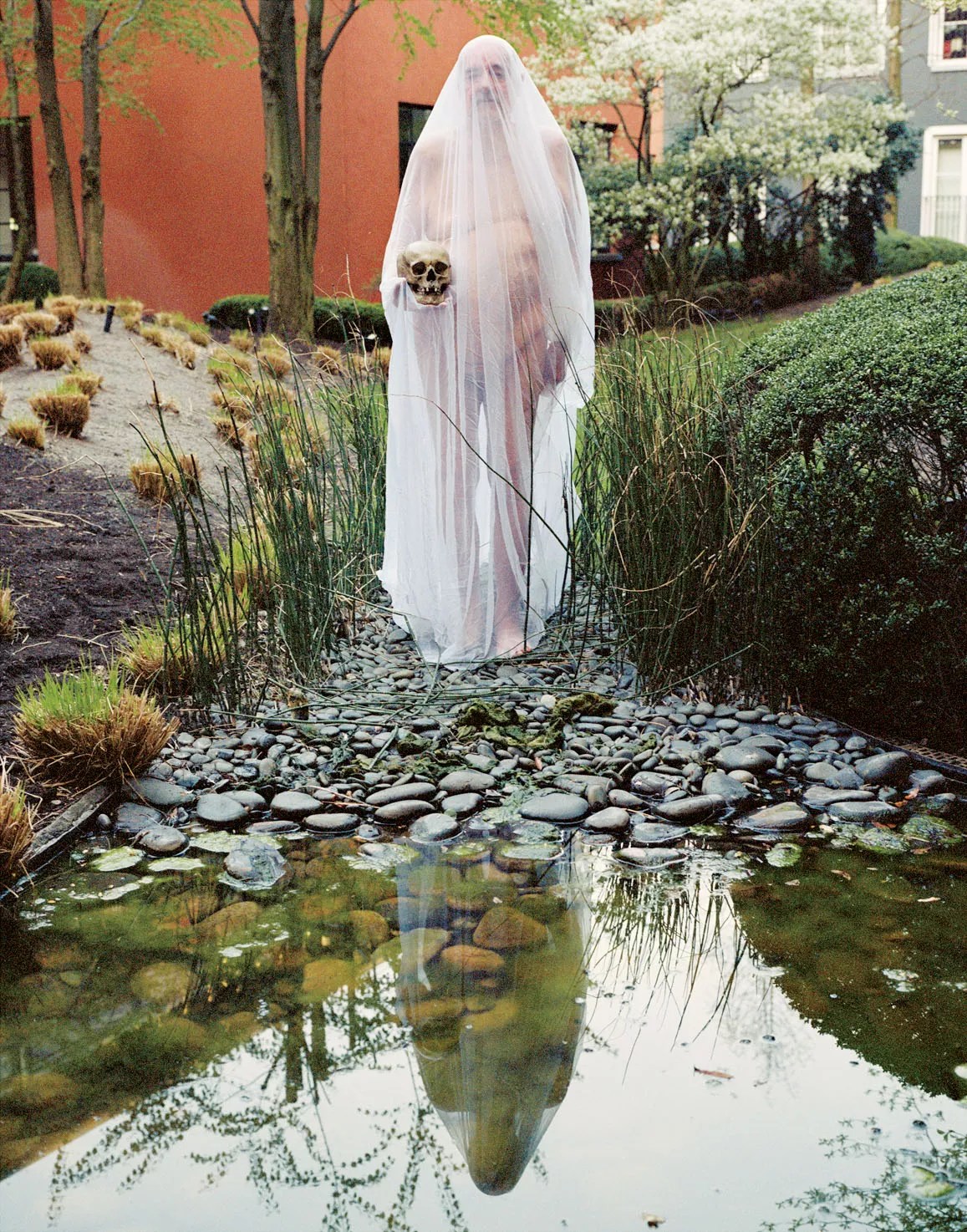
St
From the collection of St
I first drove to Carefree to meet Janssen in the early ’90s. I was just out of school, working for my hometown (now defunct) newspaper, the Scottsdale Daily Progress. One day in early November 1991, I pitched an idea at our weekly staff meeting.
“How about a story about what it’s like to be gay in Scottsdale?”
My editor politely declined. They’d already tried that one, he said, and it didn’t work. No one wanted to talk, no one was interested.
I walked back to my desk and checked the wires. This was long before Google and web browsers. The lead story on the Associated Press was about basketball player Magic Johnson. He’d been diagnosed with HIV and was quitting the Lakers. I felt someone standing next to me; I looked up.
“How quickly can you get to that story about being gay in Scottsdale?” my editor asked.
“But Magic Johnson’s not — ” I began, and stopped.
“Right away,” I said.
That led to an introduction to Janssen and, ultimately, a story that was as much about AIDS as anything else.
It wasn’t as though no one had ever heard of AIDS in 1991. A decade earlier, The New York Times had reported that there were cases of gay men in New York and San Francisco with raised purple marks on their bodies, among other symptoms. Rock Hudson’s death in 1985 made a huge impact in terms of attention and awareness.
It would be another two years before scientists would actually identify the HIV virus, but by 1991, people knew that HIV/AIDS was not limited to gay men, but that women and straight men were susceptible, and that it was also spread with dirty needles.
People in Phoenix didn’t tend to talk about it much. Robrt Pela did.
In 1985, about a decade before he and I would become colleagues at Phoenix New Times, Pela started a newspaper for gays and lesbians. He wanted to call it Fag Rag (with a Ph- for Phoenix) but his investors said no, so he called it Phoenix Resource.
Pela, who is gay, remembers the early days of the HIV/AIDS epidemic, the frustration with President Ronald Reagan, who didn’t acknowledge the crisis till Hudson’s death — and then only barely. Here in Phoenix, Pela recalls that men would stand at the entrance to gay bars handing out condoms and brochures, collecting dollar bills to fund their activism. Once there was more than one group, there was infighting. And that slowed down the help.
Activism didn’t happen quickly enough, Pela says, and “we needed it in a timely manner because people were literally falling over in front of us.”
But the news of a superstar athlete like Magic Johnson contracting HIV brought a kind of attention no one had seen.
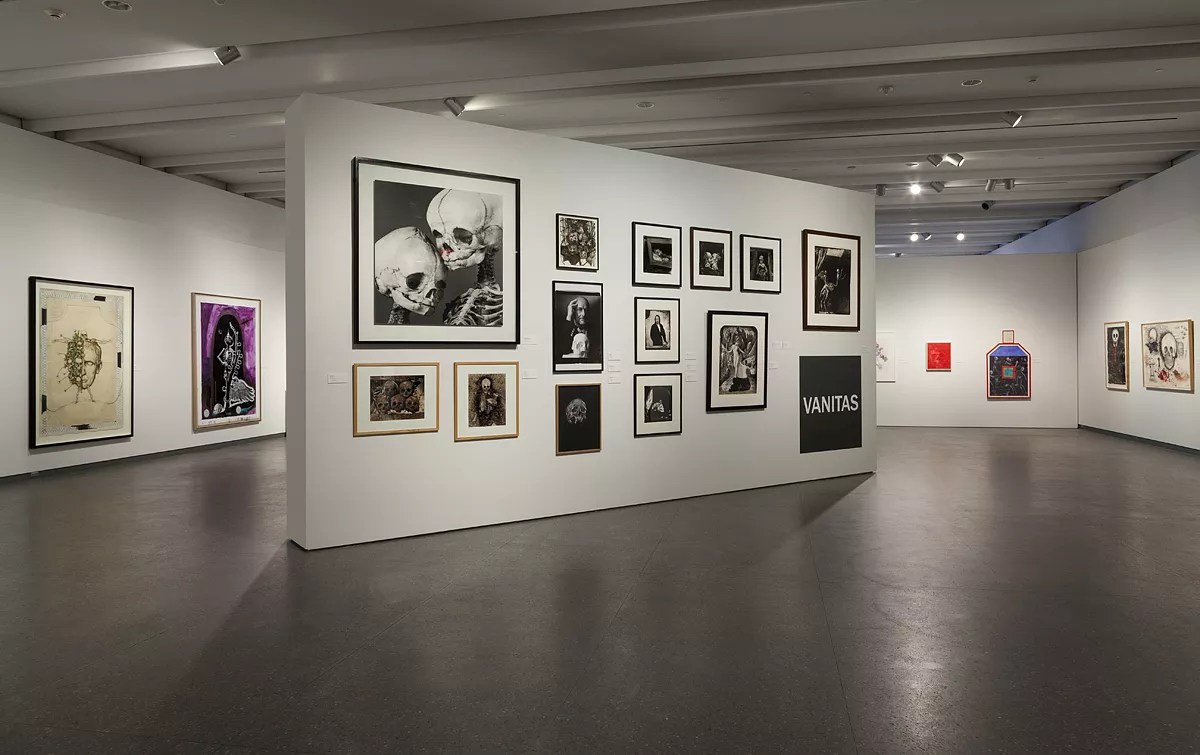
Installation view of the 2014 “Veritas” exhibition at the Phoenix Art Museum, featuring works from the collection of St
Courtesy of Phoenix Art Museum
Like other gay men, Stéphane Janssen and the love of his life, R. Michael Johns, already knew too much about AIDS by then. Johns had been diagnosed with HIV in 1988. They’d been together since 1981 and had not practiced safe sex. Janssen did not test positive then and never has, he says. He says there’s a theory that if you have ancestors who survived the bubonic plague that you are not as susceptible; that might be the case with him.
At the time both men were tested, Janssen recalls, “a psychic told me, ‘He’s positive and you’re negative.’”
Janssen never did get sick. At the time I first met him, Johns wasn’t sick either, still playing golf and traveling. I wrote a story about the two of them that ended with an icky-sweet line about how they call it living with AIDS, not dying from it.
But at the time, AIDS really was the death sentence everyone talked about. It would be several years before truly effective medications hit the market. Johns developed serious symptoms as summer 1992 approached. He was suffering from double vision and headaches. Janssen took him to the hospital.
“The doctor turned his back to him and said, ‘He has a brain tumor, he’s terminal,’” Janssen recalls, shaking his head.
“Michael said, ‘Hey, I’m blonde, but I’m not stupid!’”
Johns refused chemotherapy. He was dead within the year. Twenty-five years later, Janssen remembers the stigma of AIDS at the time — friends who wouldn’t share a Jacuzzi, an employee who wouldn’t sit in a chair Johns had sat in.
Janssen has had other relationships, although Johns remains his true love.
“I’ve always been very cautious after that. … So I’m not very concerned.”
In 2014, the Phoenix Art Museum put on a show featuring selections from Janssen’s large collection, focused on imagery of skulls and other expressions of death.
“Michael and I loved skulls and ‘tough art’ even before we met,” he wrote me recently. “We continued collecting them together even after he was diagnosed HIV+ and of course after he died I continued with a passion.”
“Vanitas: Contemporary Reflections on Love & Death from the Collection of Stéphane Janssen” was an “homage to Michael, including two of his last works that included skulls and dancing skeletons,” Janssen says.
It also included a self-portrait of Robert Mapplethorpe holding a cane with a skull handle, taken shortly before his death, and work by Nan Goldin, Richard Avedon, and Peter Hujar, among others.
“Michael always said, ‘I’m an innocent victim,’” Janssen says. “Now, if you are not careful, you are guilty of not being careful. Because you should have known.”
And yet, a kid like Angel Zavala says he didn’t know.
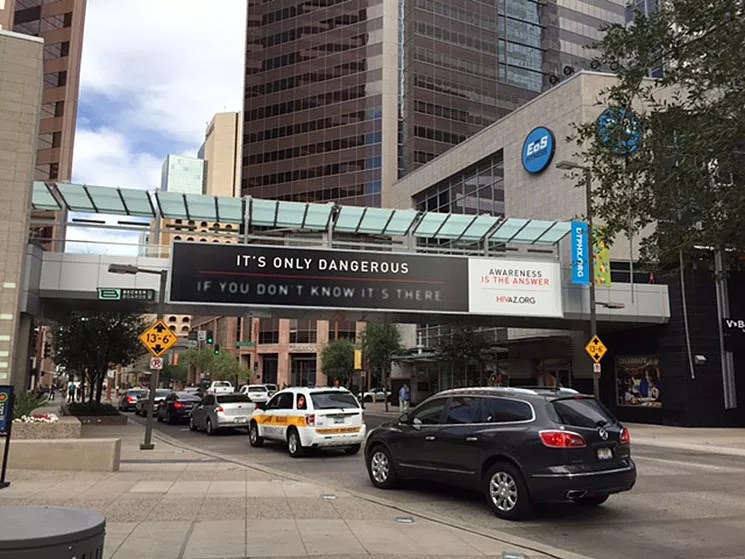
The message about HIV awareness displayed on billboards in Arizona is very vague.
Courtesy of Moses Inc.
Once AIDS was no longer a killer, it receded into the shadows, particularly in a place like Arizona, where for so long our leaders have addressed risky behavior like unprotected sex by ignoring it.
It’s no coincidence, experts say, that a lack of sex education in schools has corresponded with lower ages of HIV transmission.
Arizona’s “No Promo Homo” law, passed in 1991, bans public schools from any sort of description of safe sex when it comes to homosexuality.
Jodi Liggett, vice president of public sffairs for Planned Parenthood Arizona, says the state is one of only five that still has such a law on the books.
According to ARS 15-716, “No district shall include in its course of study instruction which: 1. Promotes a homosexual life-style; 2. Portrays homosexuality as a postive alternative life-style; 3. Suggests that some methods of sex are safe methods of homosexual sex.”
But that’s not the only stumbling block in this area. Liggett notes that there’s no state legal requirement for any sex education instruction in Arizona schools. There is, however, a requirement that if a school offers such instruction, parents must “opt in.”
“We advocate for opt-out systems, which respect parents’ wishes, but allow the maximum number of kids to benefit,” Liggett says.
She is also concerned because the state does not track which schools offer sex education or anything about the instruction offered.
“The failure to require sex ed, to insist on medically accurate and inclusive education is a terrible neglect of our children by the state,” Liggett says. “We know quality sex ed saves lives — for HIV and teen pregnancy alone, this should be a no-brainer.”
State Senator Martin Quezada, a Democrat from Phoenix, has introduced legislation several times over the last few years to repeal the “No Promo Homo” law. This year’s bill did not even get a hearing.
Angel Zavala says he doesn’t recall receiving any sex education at all.
And he didn’t hear of PrEP until it was too late. That’s not surprising. Cities like New York and San Francisco have in-your-face ad campaigns. Not here.
PrEP is not new — it was first documented in medical journals in 2010. In January 2016, The Washington Post reported that an estimated 10,000 people in San Francisco take Truvada (the brand name) and that the city, once the epicenter of the epidemic, is poised to effectively eliminate new cases.
“In order to really achieve zero transmission rate, you have to use PrEP,” says Phoenix physician Dr. Thanes Vanig. His practice focuses on patients with HIV/AIDS, so he knows about PrEP. But experts in Phoenix say that most primary-care doctors here have no idea PrEP exists.
Many private insurers cover PrEP, so if you know to ask for it, you might get it. But if you are indigent, at the moment you’re likely out of luck. The Arizona Health Care Cost Containment System (AHCCCS), the state’s Medicaid agency, will not pay for PrEP, according to AHCCCS spokeswoman Heidi Capriotti.
Currently, the only drug approved for use as PrEP is Truvada, a combination of two of the three medications that make up the treatment regime for a person infected with HIV. AHCCCS will pay for the drug for the treatment of HIV, but not for use as PrEP.
Dr. Anna Khalsa explains that PrEP is controversial, because it’s said to promote promiscuity. And it’s expensive, she says, up to $2,000 a month. But, she adds, that’s a lot cheaper than a week’s stay in the hospital. Or a lifetime of HIV medication, which costs at least $3,000 a month.
“With respect to coverage of Truvada for PrEP, it is not currently covered,” AHCCCS’ Capriotti wrote in an e-mail to Phoenix New Times. “However, the AHCCCS Pharmacy & Therapeutics Committee will be re-evaluating the evidence supporting prophylactic use of antiretroviral agents for individuals not infected with HIV in an upcoming public meeting.”
Capriotti says the committee will take up the issue at either its July or October meeting.
Sex education and availability of PrEP are important; equally vital, experts say, is funding to both promote and provide testing for HIV.
These days you can take an HIV test for between $12 and $15. Cheap, right? But imagine how many people come through an emergency room in a month. That’s how many people John Sapero, office chief for HIV prevention for the state of Arizona, would like to see tested on a regular basis. At least.
Right now, Sapero has grant money in place that allows for opt-out testing in emergency rooms at Maricopa Medical Center and the University of Arizona; he wants that expanded statewide.
In 2015, 730 people in Arizona were diagnosed as HIV positive, Sapero says; 500 were from Maricopa County.
“I think we can identify why our rate is still high,” Thanes Vanig says. People don’t know they have HIV/AIDS — and they are spreading it.
Sapero doesn’t love talking about numbers. He warns that CDC figures are likely on the low side, due to technical glitches. And, he adds, increased awareness about HIV will lead — at least initially — to an increase in diagnoses, as people are educated and get tested.
In a phone interview, with DHS spokeswoman Holly Ward also in the room, Sapero says that he doesn’t really know much about sex ed laws, and that he’s not sure if AHCCCS really won’t pay for PrEP. It’s obvious that he’s in a tough space politically — he prefers to talk only about what his office is doing, and then very, very carefully.
He points me to the website for the HIV Victory campaign.
“We will end HIV in Arizona by 2021,” the beautifully designed site proclaims.
“Our plan is a thoughtfully crafted, comprehensive five-year strategy to win and win BIG. To wipe out HIV in Arizona. That’s right, total annihilation — no mercy.”
It’s a plan that took “1,483 hours” to develop, that coincides with a similar program approved by the Phoenix City Council — a concerted effort to increase awareness, testing, and treatment.
“I am so ecstatic to be where we are now,” Sapero says. “It excites me and energizes me and makes me want to cry.”
It’s hard not to tear up as John Sapero talks of his efforts, and his own diagnosis — he’s been HIV positive for 27 years now.
And yet I kind of want to cry, just thinking about how impossible this will be to achieve here. Until the sex ed laws change, until the word gets out about PrEP — and it’s available to low-income people, the most disenfranchised — how can rates come down?
I don’t want to discount the successes. Phoenix really has come a long way. Many of the agencies and nonprofits housed at the Parsons Center are national models for HIV care and prevention.
But this remains a tough place to get the word out about anything.
People in Phoenix wake up, get in the car in the garage, drive to work, drive back home, walk from the garage to the kitchen, and turn on the television, Brendan Mahoney says.
When during the typical day, he asks, should HIV awareness take place?
Mahoney’s right. He served from 2012 to 2014 as a senior adviser to the mayor. He took the job to get an anti-discrimination ordinance passed and — mission accomplished — went back to the private sector. He now chairs the city’s Human Rights Commission. He gets how tough this place can be.
He agrees that testing, PrEP, and sex education are all important, but there are other issues here as well, aside from how isolating the place can be. For one, Phoenix doesn’t have a concentrated gay neighborhood.
Go to the Castro in San Francisco, West Hollywood in Los Angeles, Boys Town in Chicago, Mahoney says. Phoenix doesn’t have that. Yes, we have more density than we used to, and a few gay businesses, but still — there’s no place to leaflet, nowhere to hang posters.
And beyond Phoenix proper, things get tougher. Tempe is friendly, Mahoney says, but Scottsdale and Glendale less so.
“At best, we get benign neglect, and at worst, we get open hostility.”
In a lot of ways, not much has changed in 30 years. The best way to increase HIV awareness is still to hand out condoms in gay bars. And elected officials still make it tough to get much done, journalist Robrt Pela says.
“Things are being slowed down because of conservatism, which we don’t want to cop to anymore.”
I’m thinking about all of that — conservatism, benign neglect, open hostility — as I head into the theater on a recent Sunday afternoon. I’m in Scottsdale to see Greasepaint’s production of The Laramie Project. The story of Matthew Shepard’s brutal murder and the painful aftermath is almost 20 years old, but it feels fresh in the hands of a group of young people following the true story of several creatives who came to Laramie, Wyoming, shortly after the incident to document what had happened.
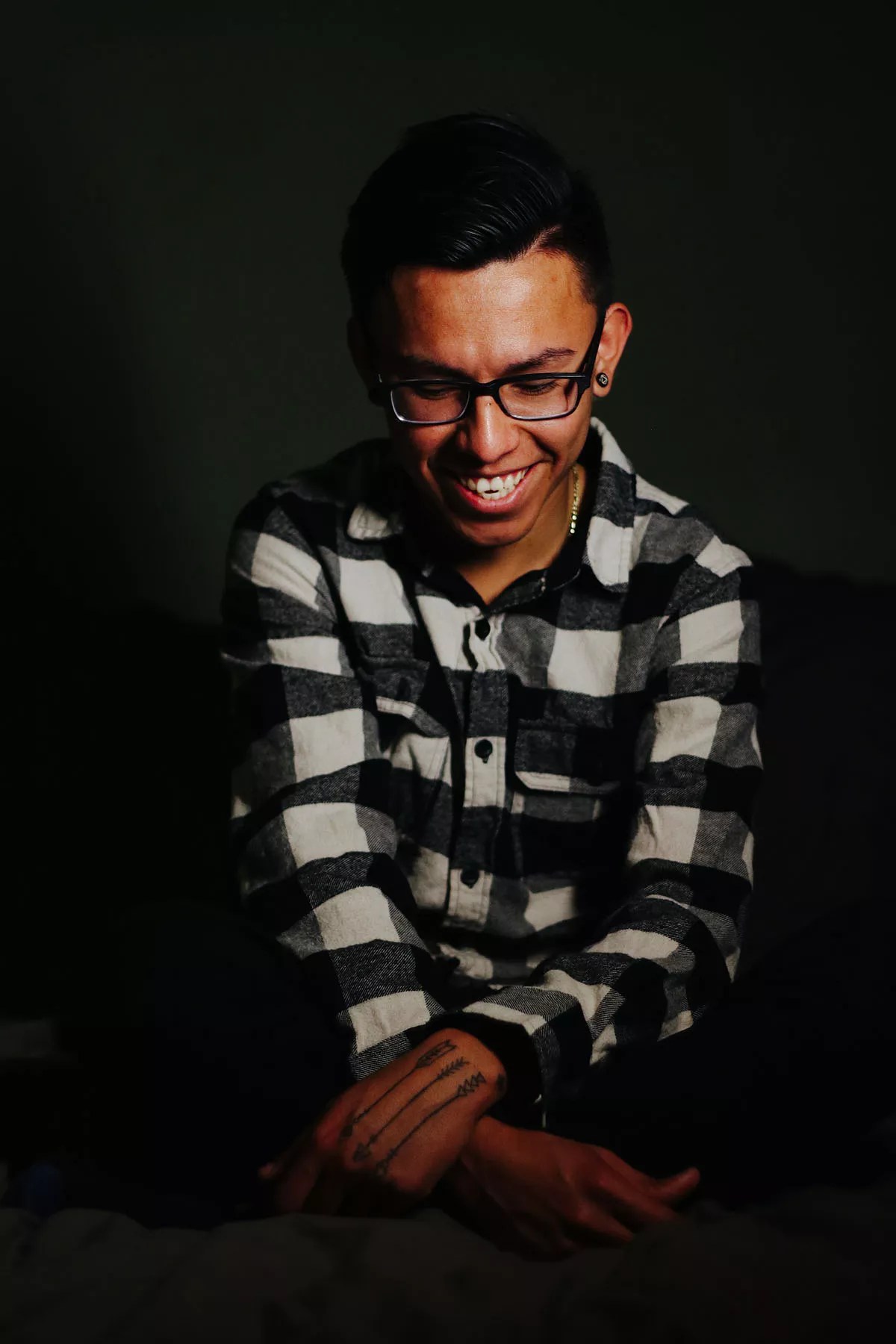
Angel Zavala has a job as a supervisor, is living on his own, and has started taking college classes.
Evie Carpenter
I’m thinking about Angel Zavala, too.
Zavala had told me he was bullied in middle school and high school, teased for being gay. After his HIV diagnosis, he lost many friends in the new community he’d formed.
That must have been hard, I say. He shrugs.
“We weren’t meant to be friends,” he says. “I live my life the way it is.”
Life is pretty good for Zavala. He works at Walmart, cringes a little when he says it, but it’s clear he’s proud of what he’s accomplished. He moved out of his mom’s house in Goodyear several years ago when he was 17, got his GED and a job — worked his way up from cashier to supervisor. He started taking classes at Phoenix College this January. He wants to be an engineer, to design “anything from houses to skyscrapers.”
He has a car, a roommate to help pay the bills. He likes to eat organic. Eventually, he wants to move away from Phoenix to “the country.” It’s too hot here, he says.
The medication is working. Zavala feels less tired. More like himself, ready to move forward. Willing to share his story, so others won’t make the same mistake.
E-mail amy.silverman@newtimes.com.